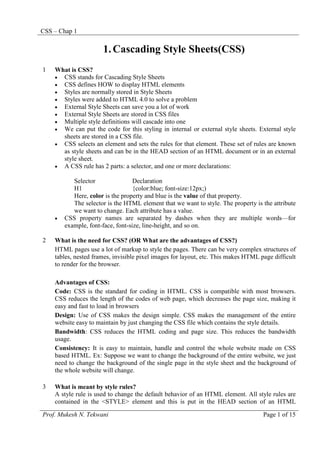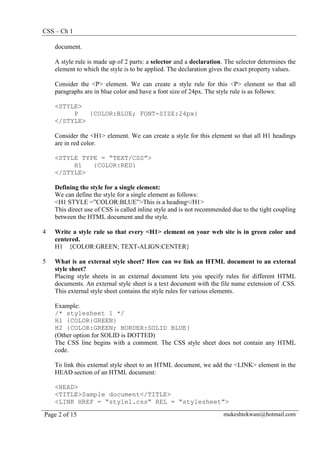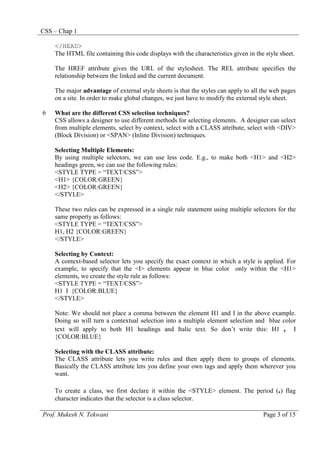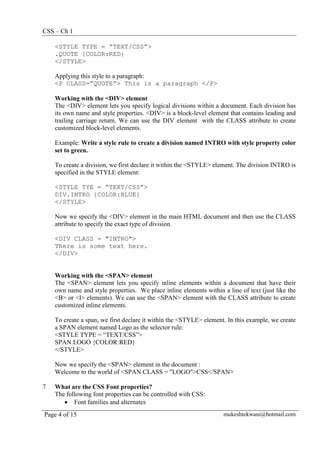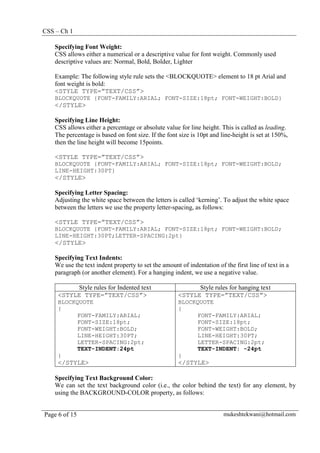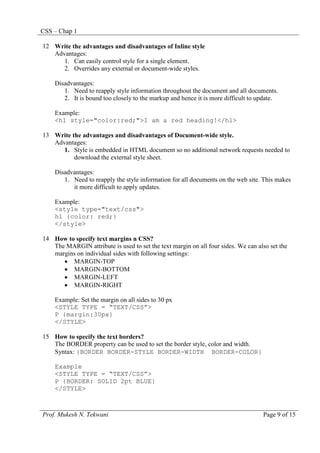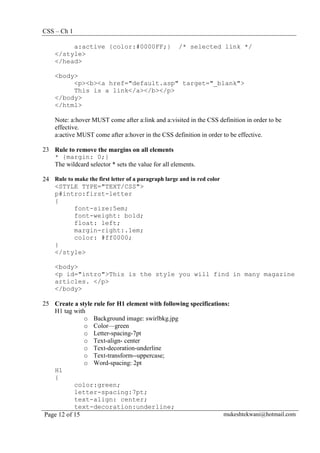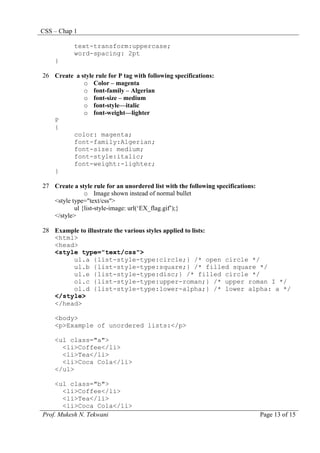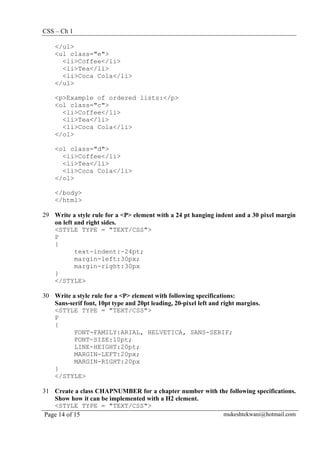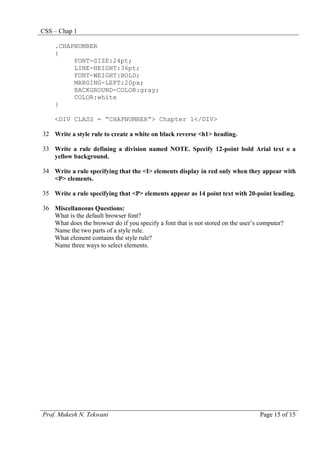This document provides an overview of CSS (Cascading Style Sheets) including definitions, advantages, properties and techniques. It defines CSS as defining how HTML elements are displayed and styles being stored in style sheets. Advantages of CSS include reduced code/page size, easier design/maintenance. Style rules define how to change default element behaviors and have selectors and declarations. External style sheets can apply styles across pages by linking via <LINK>. CSS selection techniques include selecting multiple elements, by context, with classes, <DIV> and <SPAN>. Font properties that can be controlled include family, size, weight, line height and color.
